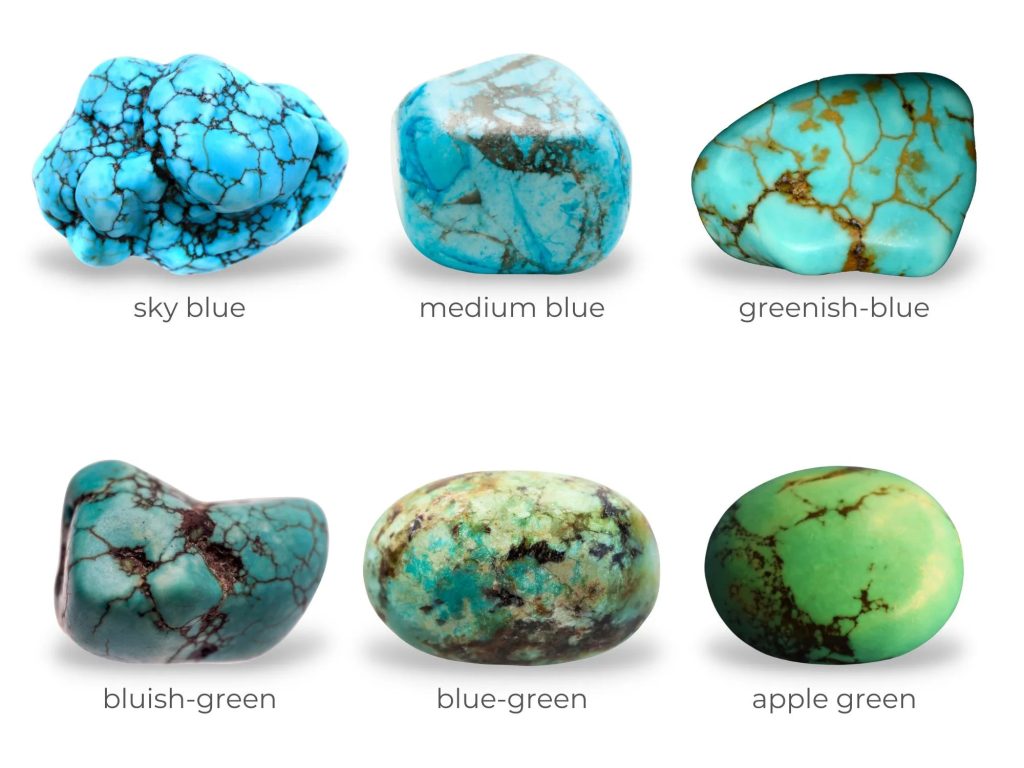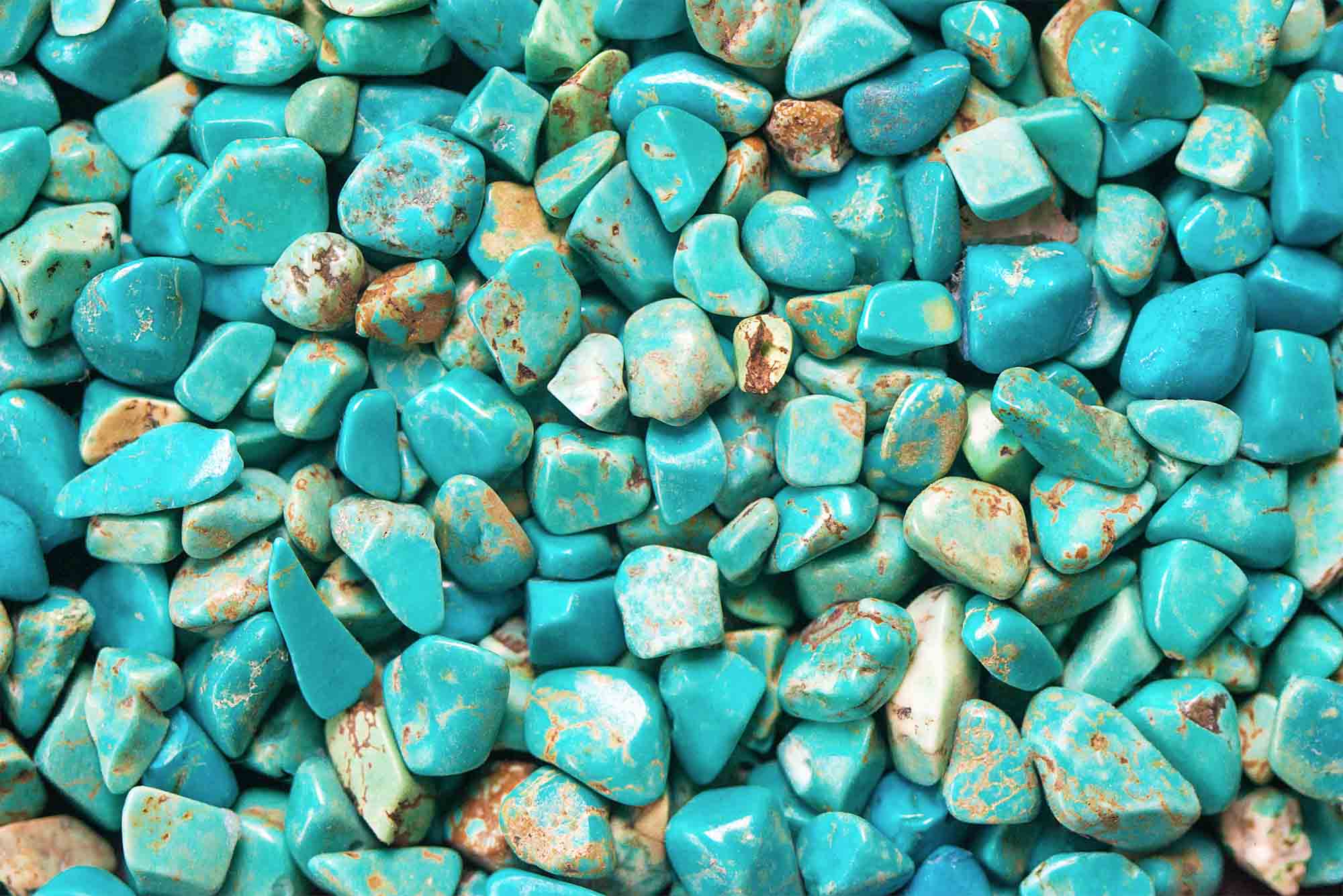“I’m torn between the bluish-green turquoise jewelry and the moonstone jewelry.”
For your problem, we have got the most desirable and obvious solution!
Check out this distinction guide, which will undoubtedly assist you in making the most fruitful decision for yourself.
Which Is Better: Turquoise or Moonstone Jewelry?
1. The Mesmerizing Colours of Turquoise

The enticing colours of turquoise jewelry can vary based on the quality of the stone as well as the place from where it was mined. Turquoise colours can range from blue to green in most cases.
Some of the most popular turquoise jewelry colours on the market are:
Robin’s Egg Blue: By far the most valuable and alluring turquoise jewelry shade. This material is used to make extremely precious jewelry such as turquoise rings and stud turquoise earrings. It primarily offers a mild bluish-green colour and is native to Arizona.
Sky Blue: This light blue turquoise is usually mined from the Sleeping Beauty mine in Arizona.
Green: Turquoise with a light to pale greenish colour can be found near the Carico Lake mine in Nevada.
Blue-Green: A pale blue and green colour combination is one of the most appealing and eye-catching turquoise jewelry tones.
Dark Blue: Stones from the Lander Blue mine in Nevada typically have a deep and rich blue tone.
The best moonstone on the market will typically have an ethereal blue lustre, colourless and crystal-clear beauty, and reflected clarity.
Moonstone comes in a variety of colour colours that can complement the stunning appearance of its blue lustre. Some spectacular colour ranges in moonstone grading include:
1. The blue moonstone
2. The green moonstone
3. Moonstone rainbow
4. Pink moonstone
5. Orthoclase
Moonstone rings in crystal-clear to greyish hues with a translucent clarity and free of impurities are regarded as the greatest colour among all.
2. The Alluring Clarity Levels of Turquoise
The surface of light blue to green turquoise is usually opaque to translucent. However, it is uncommon to come across absolutely translucent turquoise in the market. The reason for this is that the natural occurrence of turquoise includes the presence of impurities and imperfections in its surface, giving it a cloudy and blurred look. It goes without saying that the beauty and radiance must not be compromised.
In some uncommon situations, the crystal-clear brilliance of a turquoise with a relatively high degree of transparency can captivate your vision. It usually has a magical beauty to it since the view of light moving through the crystal offers a mesmerising and heavenly appearance.
The Birthstone Jewelry that represents the auspicious month of June can be entirely transparent to opaque. Semi-translucent moonstone jewelry is also becoming popular in the market.
The best and finest graded moonstone jewelry, on the other hand, would have a highly transparent and reflective body. Furthermore, it should be clear of inclusions so that its natural colour phenomenon, known as adularescence, can provide the most magnificent performance to grab everyone’s attention and eyes.
3. How Long-Lasting Durability do they Assure?
The main issue for jewelry enthusiasts while looking for adorable and lovely turquoise jewelry, such as that glittering and elegant turquoise pendant or turquoise necklace, is that it has a relatively low hardness level of only 5-6 on the Mohs scale of hardness.
It implies that handling turquoise jewelry necessitates special caution and concern on the side of the user. Because turquoise rings and earrings are exceptionally sensitive and delicate, they can sustain catastrophic damage if they come into contact with harsh or abrasive surfaces.
Moonstone, on the other hand, is somewhat soft and fragile, with a not-so-satisfying hardness rating of 6.5 on the Mohs scale. Carry that exquisite pair of stud moonstone earrings with care and concern.
Also Read- How to Start a Home Jewellery Business: A Comprehensive Guide
4. The Lustre of the Sheen
In terms of lustre, turquoise typically has a waxy to vitreous lustre, which helps to highlight the stone’s captivating and dazzling beauty as light enters its crystal and is distributed across by the presence of microscopic imperfections and impurities.
The turquoise’s blue lustre and brightness are enhanced by its gorgeous and eye-catching lustre, which is caused by the sizzling reflection and refraction of light.
The shimmering and iridescent effect found on the surface of moonstone gemstones is referred to as moonstone lustre. Moonstone is a feldspar crystal that shows a unique optical phenomenon known as adularescence, which provides the appearance of a floating light or glow on the stone’s surface.
The dispersion of light as it passes through the tiny layers of feldspar within the stone causes this adularescence. The light is refracted and reflected at different angles, resulting in the distinctive blue or white sheen known as “moonlight on water” or “moonstone lustre.”
5. Price
Turquoise is a valuable and uncommon gemstone. Its starting price per carat is between $3 and $5. High-quality turquoise, on the other hand, can be significantly more valuable, with prices ranging from $1,000 to $1,500.
The basic price for moonstone could vary somewhere between $10-$1000 per caret depending upon the clarity and the quality of the stone.
(Note: Is this article not meeting your expectations? Do you have knowledge or insights to share? Unlock new opportunities and expand your reach by joining our authors team. Click Registration to join us and share your expertise with our readers.)
